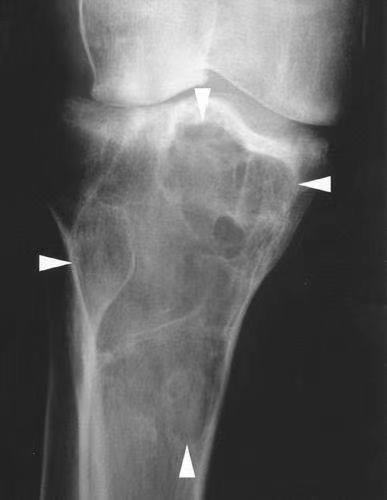| Overview Bone tumors can form in any bone in the body, but it most commonly affects the pelvis or the long bones in the arms and legs. Benign bone tumors can grow and could compress healthy bone tissue and cause future issues. Malignant bone tumors can cause cancer to spread throughout the body. Symptoms A dull ache in the affected bone is the most common symptom of bone cancer. The pain starts off as occasional and then becomes severe and constant. The pain may be severe enough to wake you up in the night. Sometimes, when people have an undiscovered bone tumor, what seems like an insignificant injury breaks the already weakened bone, leading to severe pain. This is known as a pathologic fracture. Sometimes there may be swelling at the site of the tumor. Or you might not have any pain, but you’ll notice a new mass of tissue on some part of your body. Tumors can also cause night sweats, fevers, or both. People with benign tumors might not have any symptoms. The tumor might not be detected until an imaging scan reveals it while receiving other medical testing. |  |
Treatment
Image-guided RFA is a conventional modality for the treatment of primary and metastatic bone tumors associated with severe pain; it is also a relatively effective, minimally invasive, and safe treatment. RFA treatment reduces pain level, increases functionality, and locally suppresses the tumor in patients with bone cancer.
The principle that RFA reduces pain is thought to be due to the inhibition of pain transmission through destruction of the sensory nerve fibers in the periosteum and bone cortex, reduction of stimulation of the sensory nerve fibers through decrease in lesion volume, destruction of tumor cells that produce nerve stimulating cytokines such as tumor necrosis factor and interleukin, and inhibition of osteoclast activity.
References
Honore P, Luger NM, Sabino MA, et al. Osteoprotegerin blocks bone cancer-induced skeletal destruction, skeletal pain and pain-related neurochemical reorganization of the spinal cord. Nat Med. 2000;6(5):521-8.
Mannion RJ, Woolf CJ. Pain mechanisms and management: a central perspective. Clin J Pain. 2000;16(3 Suppl):S144-56.